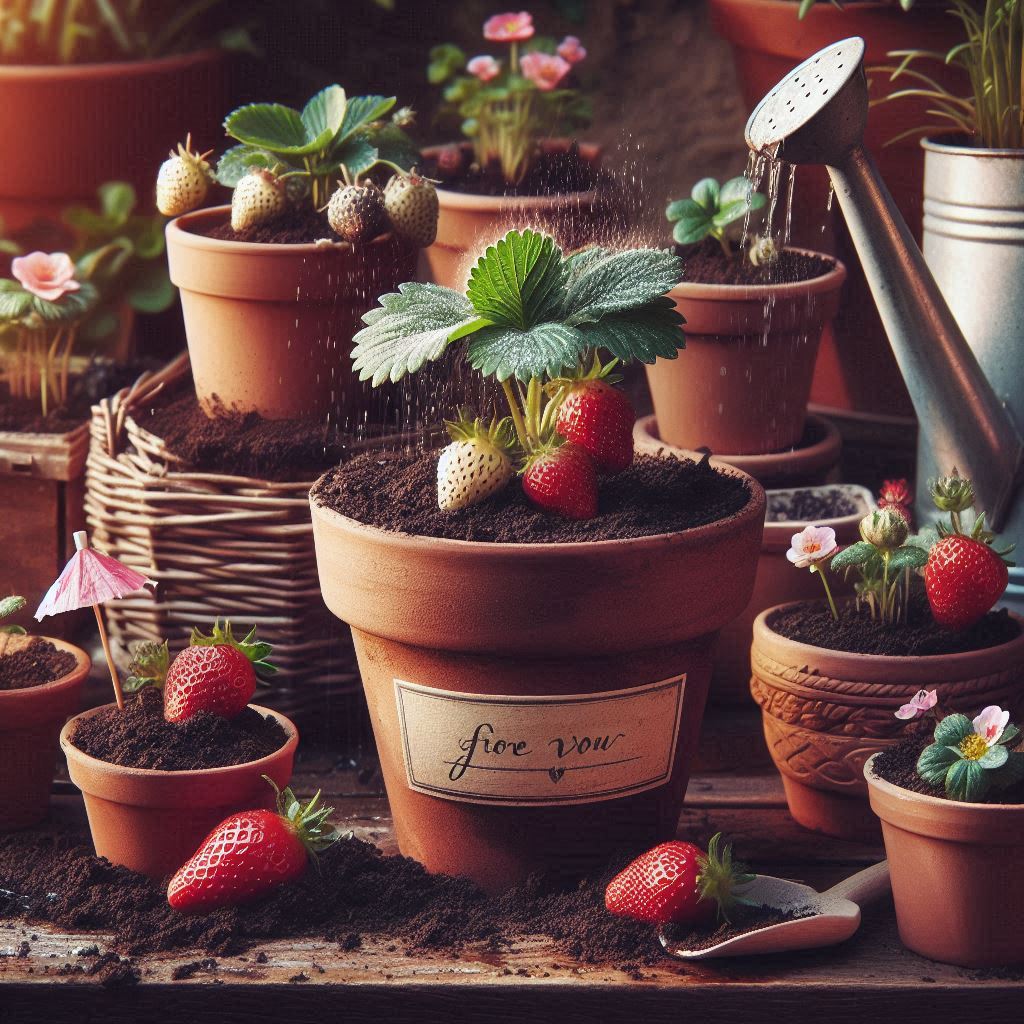Growing your own strawberries can be a fun and rewarding experience, even if you don’t have a large backyard. With the right knowledge and a little bit of effort, you can enjoy fresh, juicy strawberries right from your own patio or balcony. In this guide, we’ll walk you through everything you need to know to successfully grow strawberries in pots, from selecting the right containers to harvesting your first juicy berry.
1. Introduction to Growing Strawberries in Pots
Strawberries are one of the most popular fruits to grow in containers because they don’t require a lot of space and are relatively easy to care for. Plus, there’s nothing quite like the taste of a freshly picked strawberry straight from the vine. Whether you’re a complete beginner or an experienced gardener looking to try something new, growing strawberries in pots is a great way to enjoy the pleasures of gardening without a lot of hassle.
Key Points:
- Strawberries are well-suited for container gardening.
- They don’t require a lot of space and are easy to care for.
- Container gardening is ideal for beginners and urban dwellers with limited space.
2. Selecting the Right Pot and Soil
Choosing the right pot and soil is crucial for the success of your strawberry plants. Strawberries have shallow roots, so it’s important to provide them with enough room to spread out and grow.
Pot Selection:
When selecting a pot for your strawberries, opt for one that is at least 8-12 inches deep and has drainage holes at the bottom to prevent water from pooling around the roots. Plastic or terra cotta pots work well, but you can also get creative and use recycled containers such as buckets or baskets.
Soil Type:
Use a high-quality potting mix that is lightweight and well-draining. Strawberries prefer slightly acidic soil with a pH between 5.5 and 6.5. Avoid using garden soil, as it tends to be too heavy and may contain weed seeds and pests.
3. Planting Strawberries in Pots
Once you have your pots and soil ready, it’s time to plant your strawberries. Follow these steps for a successful planting:
Plant Spacing:
Space your strawberry plants about 8-12 inches apart to allow for adequate airflow and prevent overcrowding. This will help reduce the risk of disease and ensure that each plant gets enough sunlight and nutrients.
Plant Depth:
Plant your strawberries at the same depth they were growing in their nursery pots. Make sure the crowns (the point where the stems meet the roots) are level with the surface of the soil. Avoid burying them too deep, as this can lead to rot.
4. Watering and Fertilizing Tips
Proper watering and fertilizing are essential for the health and productivity of your strawberry plants. Follow these guidelines to keep your plants happy and thriving:
Watering:
Strawberries need regular watering to keep the soil evenly moist, especially during hot weather. Water your plants deeply once or twice a week, making sure to soak the soil all the way down to the roots. Avoid getting the leaves wet, as this can lead to mold and disease.
Fertilizing:
Feed your strawberry plants with a balanced fertilizer every 2-4 weeks during the growing season. Look for a fertilizer specifically formulated for fruit-bearing plants, and follow the instructions on the label carefully. Too much fertilizer can burn the roots, so it’s best to err on the side of caution.
5. Managing Pests and Diseases
Despite your best efforts, strawberry plants are still susceptible to pests and diseases. Here’s how to deal with common issues:
Pest Control:
Keep an eye out for pests such as aphids, slugs, and snails, which can damage your strawberry plants if left unchecked. Remove them by hand or use organic pest control methods such as neem oil or insecticidal soap.
Disease Management:
Prevent diseases such as powdery mildew and gray mold by practicing good sanitation and airflow around your plants. Remove any infected leaves or fruit promptly, and avoid overhead watering, which can promote the spread of fungus.
6. Harvesting and Maintenance
Finally, the moment you’ve been waiting for: harvesting your strawberries! Follow these tips for a bountiful harvest:
Harvesting:
Pick your strawberries as soon as they ripen to perfection, usually when they are bright red and firm to the touch. Gently twist them off the stem to avoid damaging the plant, and enjoy the fruits of your labor right away or save them for later.
Maintenance:
To keep your strawberry plants healthy and productive, remove any dead or diseased foliage, and prune away any runners that start to spread out from the main plant. This will encourage new growth and prevent overcrowding.
Frequently Asked Questions (FAQs)
Q: Can I grow strawberries indoors?
A: Yes, strawberries can be grown indoors as long as they have access to plenty of sunlight or artificial grow lights. Choose a sunny window or set up a grow light to provide your plants with the light they need to thrive.
Q: How long does it take for strawberries to grow?
A: Strawberries typically take 4-6 weeks to mature from flower to fruit, depending on the variety and growing conditions. Once they start to ripen, you can expect to enjoy a steady harvest throughout the growing season.
Q: Do strawberries need to be pollinated?
A: Yes, strawberries are pollinated by bees and other pollinators to produce fruit. If you’re growing strawberries indoors or in an area with limited pollinator activity, you may need to hand-pollinate the flowers using a small brush or cotton swab.
By following these tips and guidelines, you’ll be well on your way to growing delicious strawberries in pots, no matter how much gardening experience you have. So roll up your sleeves, grab your potting mix, and get ready to enjoy the sweet taste of success!
